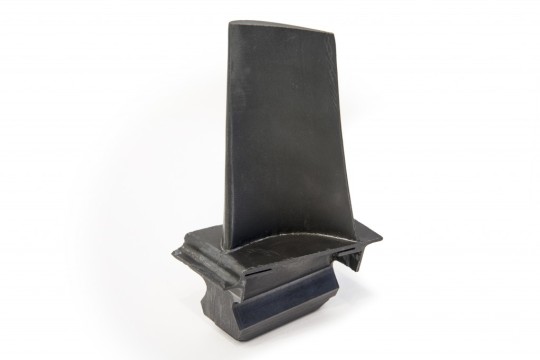SamuraiBlue
Captain
Well I guess I went too off topic in the PRC engine thread with some fanboi dupes maintains that Japan's engine technology is inferior not having the technological expertise to develop cutting technology.
Well I guess they will keep on sticking their head in the proverbial sand singing "I can't hear you" while Japan keeps on coming up with new technology.
The one I posted was this site;
This was announced in 2002 about the XF5-1 engine examining the possibility of Ceramic Metrics Composite.
Yes within the document they concluded;
Well that was over 15 years ago and they kept on doing their research and now this.
At this point there are only two companies that can produce the CMC material, one is NGS which is a joint venture between Nihon Carbon, GE Avionic and Safran in which Nihon Carbon is the senior partner holding 50% of the share.
The other is Ube Kosan which is helping out IHI.
NGS had already announced their plans of incorporating this CMC technology in their latest LEAP engine already doing test.
They also showed case the technology at last year's Paris air show.

To those who can't tell what that is, it's a jet engine turbine blade.
Lastly to those who think CMC is still something on the black board and a decade away from actual usage, well watch the vid and eat your hearts out.LoL
[/quote][/quote]
Well I guess they will keep on sticking their head in the proverbial sand singing "I can't hear you" while Japan keeps on coming up with new technology.
The one I posted was this site;
This was announced in 2002 about the XF5-1 engine examining the possibility of Ceramic Metrics Composite.
Yes within the document they concluded;
In this study, the ceramic turbine is applied in the aircraft gas turbine engine.
The structural reliability of ceramic turbine component in the aircraft gas turbine engine has been confirmed by the engine test with the engine performancebased on design. The result of this study has got a prospect of application of ceramic turbine tojet engine.
In the future study, higher structural reliability of the ceramic turbine is needed to the actual use of the ceramic turbine jet engines.
Well that was over 15 years ago and they kept on doing their research and now this.
IHI wants to be Intel of jet engine parts makers
TOKYO -- As airlines expand their fleets to meet growing global demand for air travel, and aircraft manufacturers cash in, heavy machinery maker IHI is striving to become an indispensable supplier of jet engine parts.

Boeing 777 jet engines use many IHI components.
Just as U.S. chipmaker Intel puts an "Intel Inside" sticker on every personal computer that runs Microsoft Windows software, the Japanese company wants "IHI Inside" to be the global standard for aircraft engines. To do that, it is working on cutting-edge materials that are years ahead of rivals.
What are you made of?
General Electric of the U.S. and IHI have each developed ceramic matrix composites (CMCs) for use in jet engines and are racing to be the first to supply this advanced material to aircraft makers.
Fuel efficiency is near the top of aircraft makers' priority list, and CMCs are the latest tool in their ceaseless drive to squeeze extra kilometers from every last drop. These breakthrough materials combine ceramics with silicon carbide fibers and can withstand temperatures of 1400 C or more but weigh only about a quarter as much as nickel alloy, a common composite used in jet engines.
CMCs do have drawbacks, however. "They are very fragile and prone to crack," said Kazunori Kanadu, who heads IHI's research and engineering division. "Processing them is unspeakably troublesome."
IHI and GE are both pitching their CMC engine parts for Boeing's 777X jets scheduled for launch in 2020. They are rushing to scale up production in the meantime..... to read more click here
At this point there are only two companies that can produce the CMC material, one is NGS which is a joint venture between Nihon Carbon, GE Avionic and Safran in which Nihon Carbon is the senior partner holding 50% of the share.
The other is Ube Kosan which is helping out IHI.
NGS had already announced their plans of incorporating this CMC technology in their latest LEAP engine already doing test.
They also showed case the technology at last year's Paris air show.

To those who can't tell what that is, it's a jet engine turbine blade.
Lastly to those who think CMC is still something on the black board and a decade away from actual usage, well watch the vid and eat your hearts out.LoL
